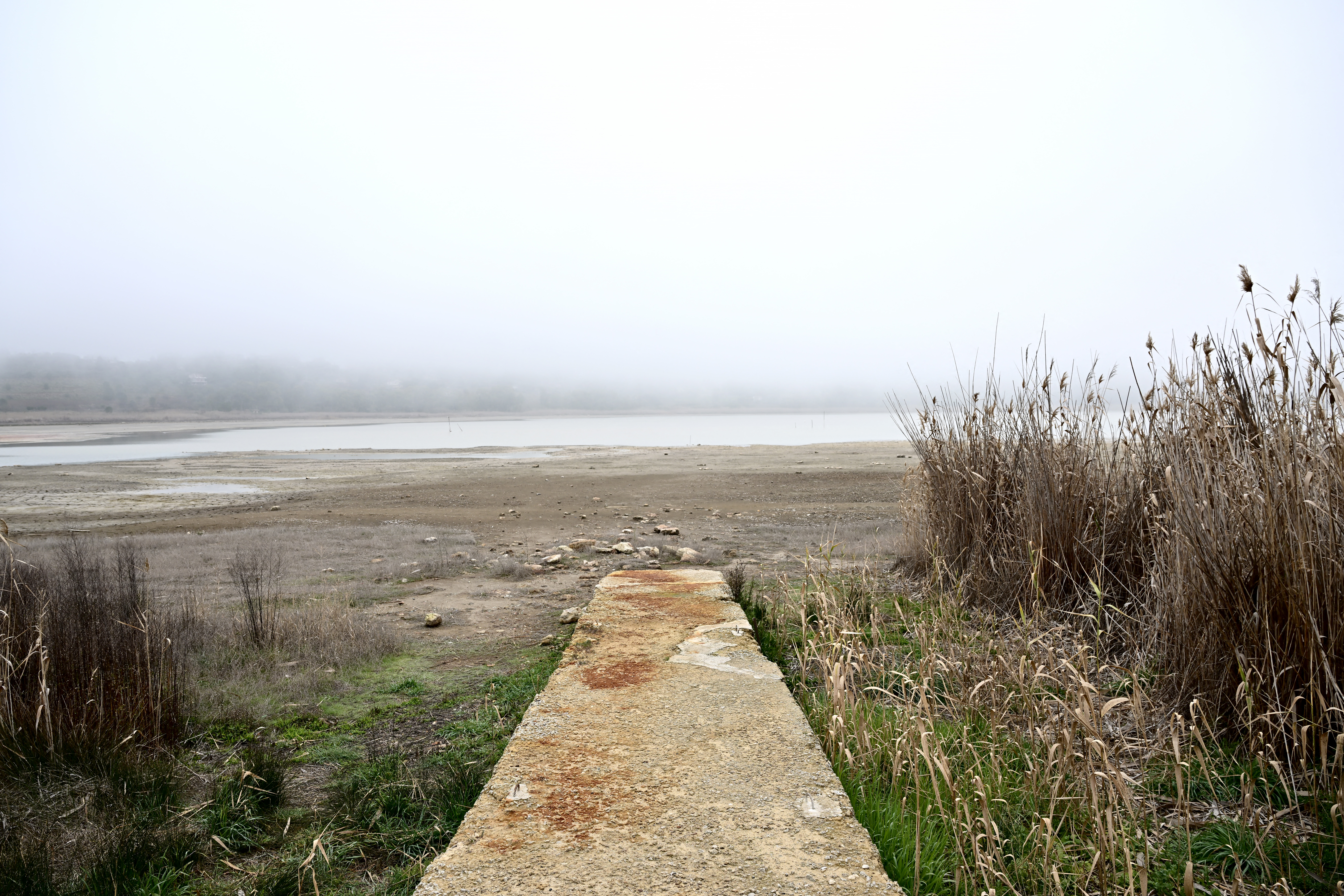
FILE PHOTO: A picture shows the low level of water at Pergusa lake due to drought, near Enna, Sicily on February 26, 2024. Cereal fields scorched by the sun, livestock deprived of pasture, devastating fires: Sicily is facing an overwhelming drought whose damage is already estimated at 2.7 billion euros by 2024. (Photo by Alberto PIZZOLI / Agence France-Presse)
SAN CATALDO, Italy — A crushing drought in Sicily has withered fields of grain, deprived livestock of pasture land, and fanned a spate of wildfires, causing damage already estimated at 2.7 billion euros this year.
In an attempt to mitigate the effects of the water crisis, the Italian government in early May declared a state of emergency for the southern island, unblocking funds to purchase water tanker trucks, drill wells, and renovate pumping and desalination stations.
But ensuing months of continued high temperatures have done nothing to ameliorate the already dire conditions, with farmers giving up on their harvests and now wondering how they’ll feed and water their animals.
“There’s no hope because it hasn’t rained since May of last year,” said Salvatore Michele Amico, a farmer near the town of San Cataldo in Sicily’s dry interior.
“All the planted fields have been lost: there is no wheat, no barley, no oats,” Amico told Agence France-Presse.
READ: In drought-hit Sicily, ‘water is gold’
The land in these parts, deprived of vegetation, is bare and cracked. Rivers, ponds and watering holes are dried up and farming equipment sits idle on formerly productive land, as cows wander in search of a blade of grass.
Once the breadbasket of ancient Rome, Sicily is expected this year to see its wheat harvest collapse by more than 50 percent, according to agricultural lobby Coldiretti.
“It didn’t rain this year, so we haven’t harvested anything and we can’t feed or water the animals,” noted another nearby farmer, Beppe Palmieri, whose land formerly supported cattle and goats as well as fields of grain and feed.
Whereas efforts are being made to bring in feed from the outside, the water situation is “critical,” Palmieri said.
“There is no water for the animals to drink, we don’t know what to do. We have issues with accessibility, certain types of tankers can’t come up and provide water to the animals,” he said.
Sicily drought: 5,800 hectares burned
Farmer Fabio Scarantino stands in front of his herd of cattle. Their light brown hides match the dry, dusty landscape behind them.
“Climate change in Sicily is real. In the past we talked about it but we could never have imagined experiencing it first hand,” Scarantino said.
FILE PHOTO: A picture shows a dry water pipeline in Lentini, Sicily, on February 26, 2024. Cereal fields scorched by the sun, livestock deprived of pasture, devastating fires: Sicily is facing an overwhelming drought whose damage is already estimated at 2.7 billion euros by 2024. (Photo by Alberto PIZZOLI / Agence France-Presse)
Unlike Sicily’s coasts, which rely largely on tourism, “in the Sicilian hinterland, which depends on livestock and agriculture, climate change plays a considerable role,” he said.
Families who have been farming for generations are left without prospects for the future, including cattle breeders who for decades have built up their animals’ bloodlines, said Massimo Primavera, the Coldiretti director for the area around Caltanissetta, a town of 250,000 inhabitants in the centre of Sicily.
READ: Factbox: Europe sees another year of droughts and wildfires
Besides the threat to livestock and fields of grain, the drought also impacts fruit trees, vineyards and olive groves to the total tune of more than 2.7 billion euros ($2.9 billion), Coldiretti said.
Meanwhile, 5,800 hectares (14,000 acres) of agricultural land have gone up in flames since the beginning of July due to wildfires that erupt with the dry conditions, said the group.
Exacerbating the effects of the drought is a lack of investment in infrastructure “to prevent water from being wasted,” Coldiretti said.
According to Italy’s National Institute of Statistics (Istat), Sicily has one of the country’s highest rates of wasted drinking water, with 51.6 percent of water lost from distribution circuits in 2022.
Istat, which says that every day in Italy 157 liters per person are lost, blames the waste on “the persistent state of inefficiency of many distribution networks”.

